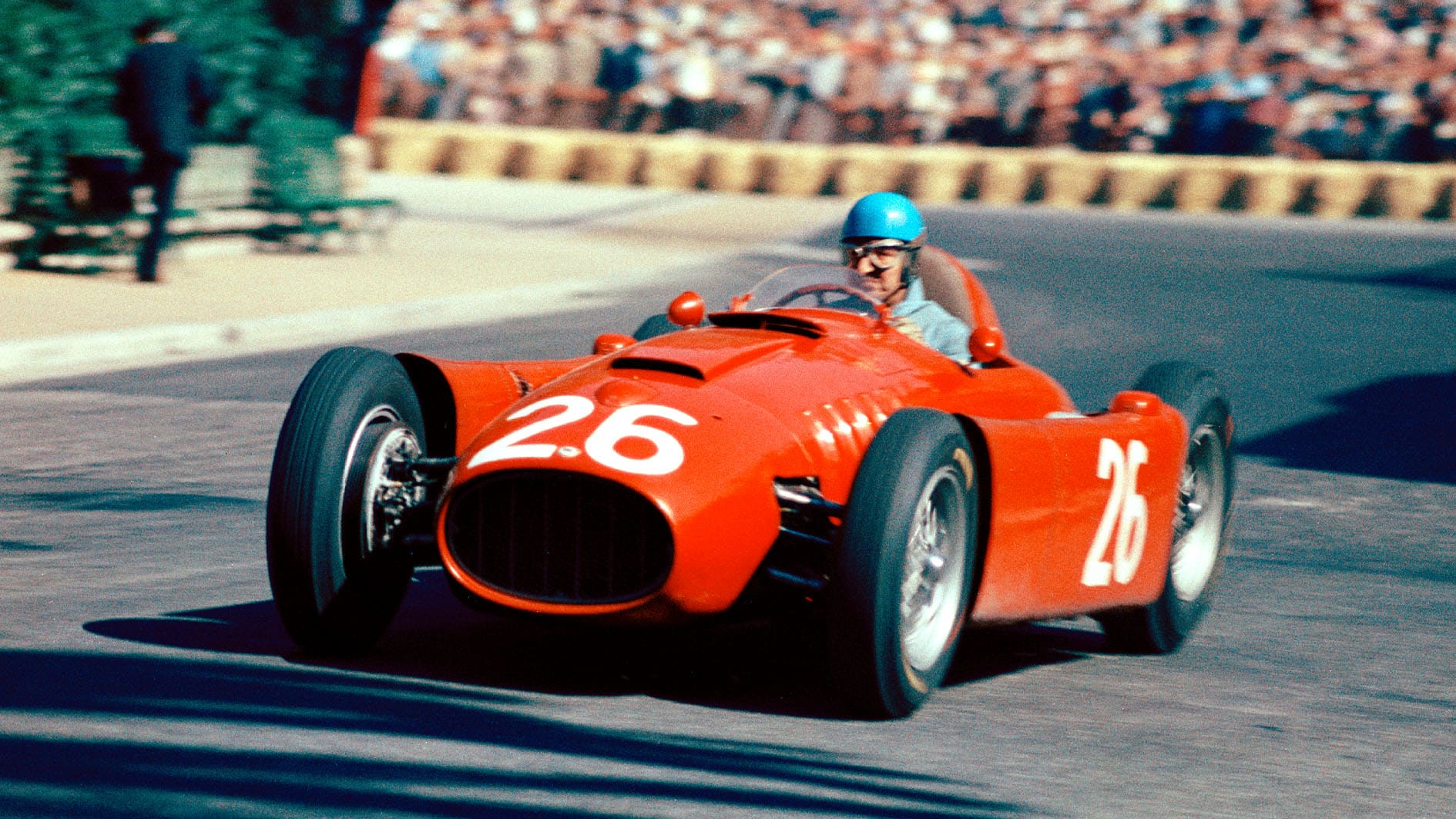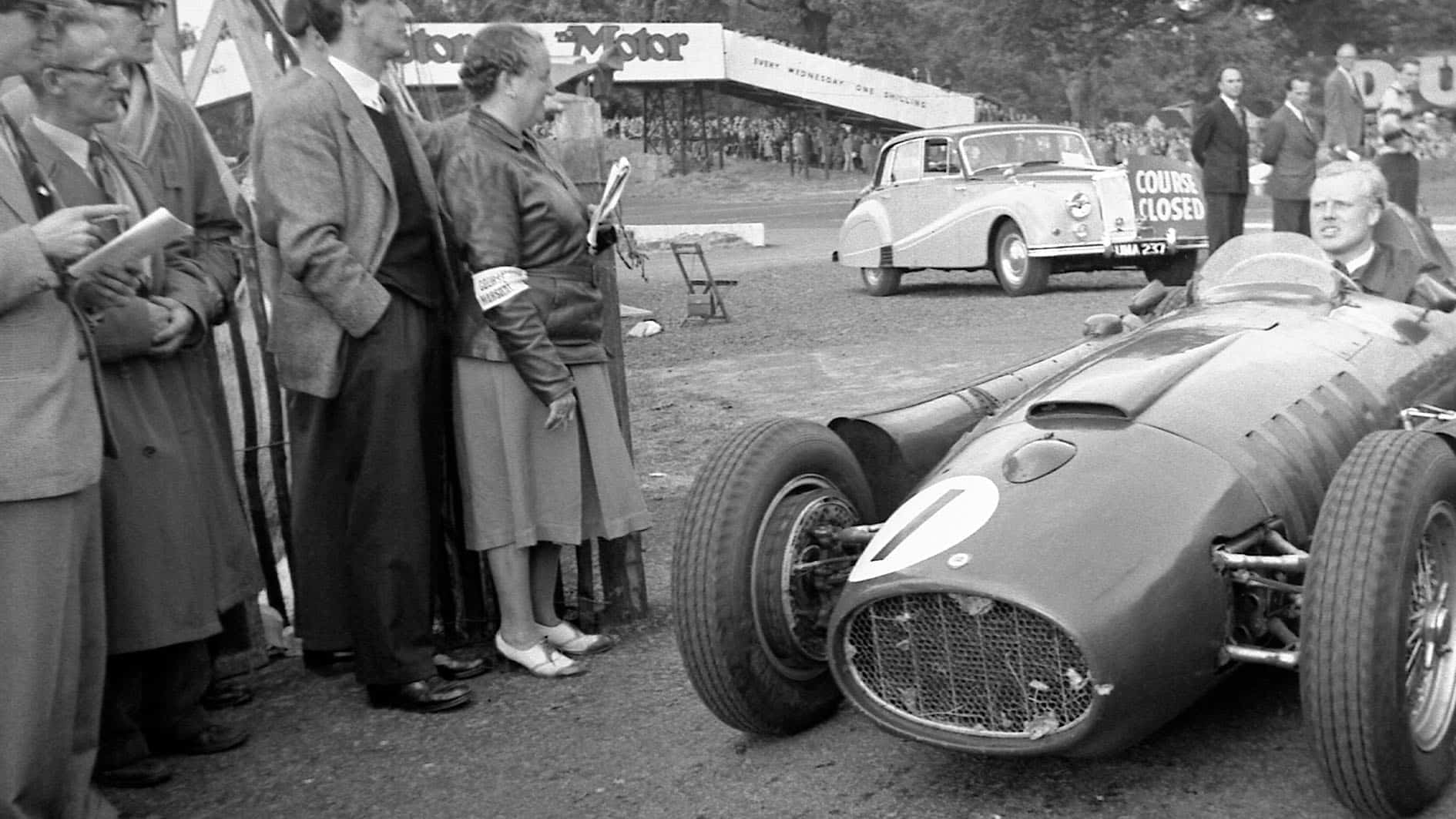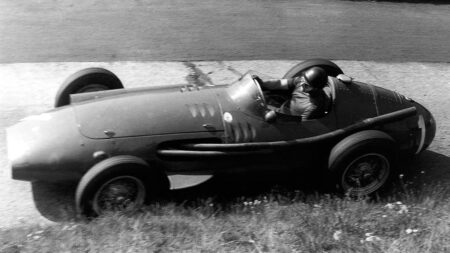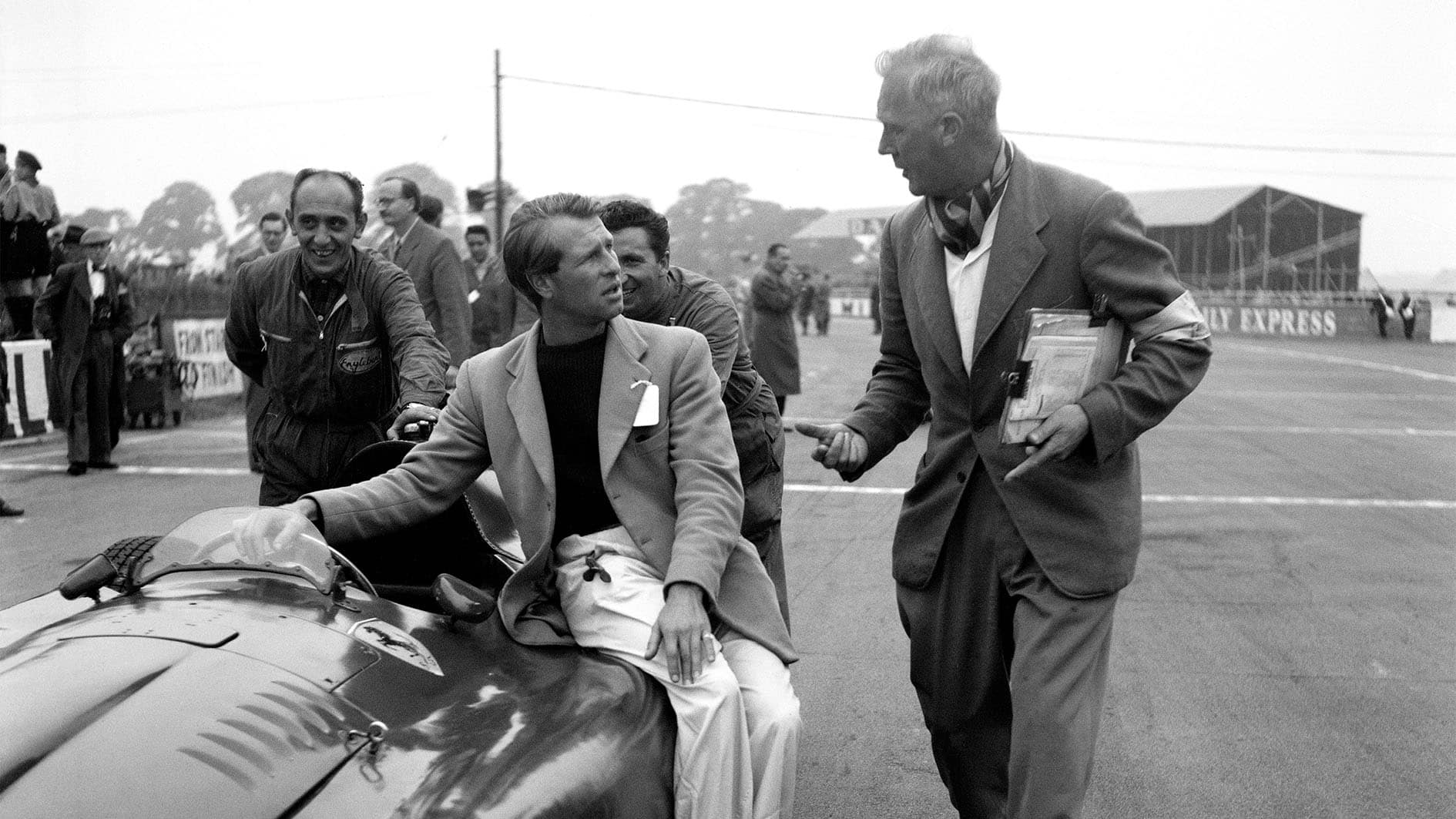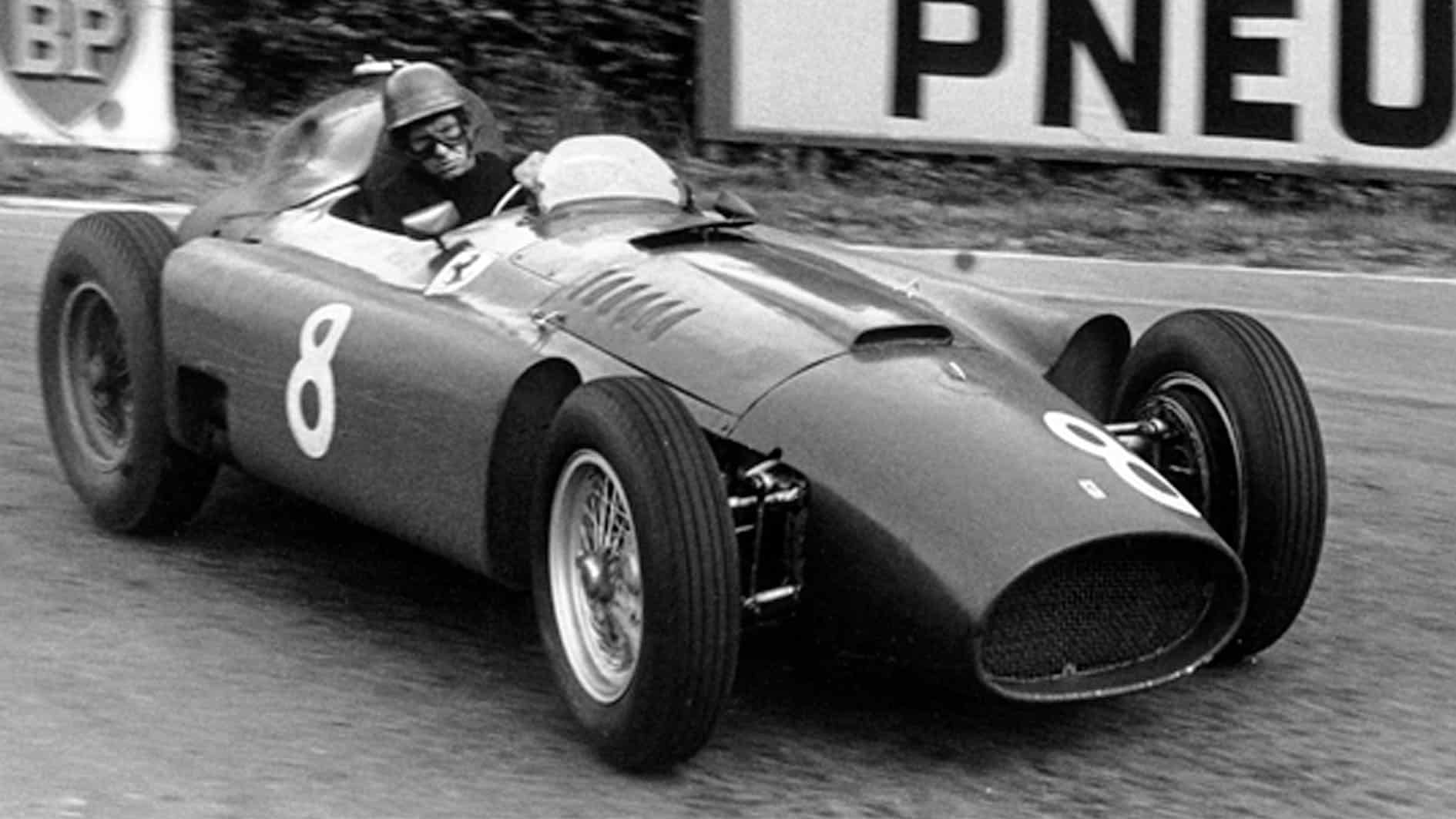But it was at Aintree that I next saw Behra, in the British Grand Prix the following summer, and he didn’t last long in that race, either. However, he qualified third, splitting the Mercedes quartet, and in the race — until his Maserati broke an oil pipe — offered the only opposition to Neubauer’s men.
No matter. I was sustained by the thought that Jean would be back in a couple of months, back at Oulton, again in a 250F. It was not to be, however, for the week before, in a tragic Tourist Trophy at Dundrod in which three drivers were killed, he crashed his Maserati 300S in the late laps and suffered serious injuries, including the loss of an ear.
That first Gold Cup had been won my other idol, Stirling Moss, in a factory 250F, but in 1955, of course, he was a member of the Mercedes team, which did not enter at Oulton Park. It had seemed, therefore, that the British public would not get to see its favourite son. But in those days a more gentlemanly approach was taken to contracts and Neubauer raised no objection when Maserati asked if Moss could replace the injured Behra.
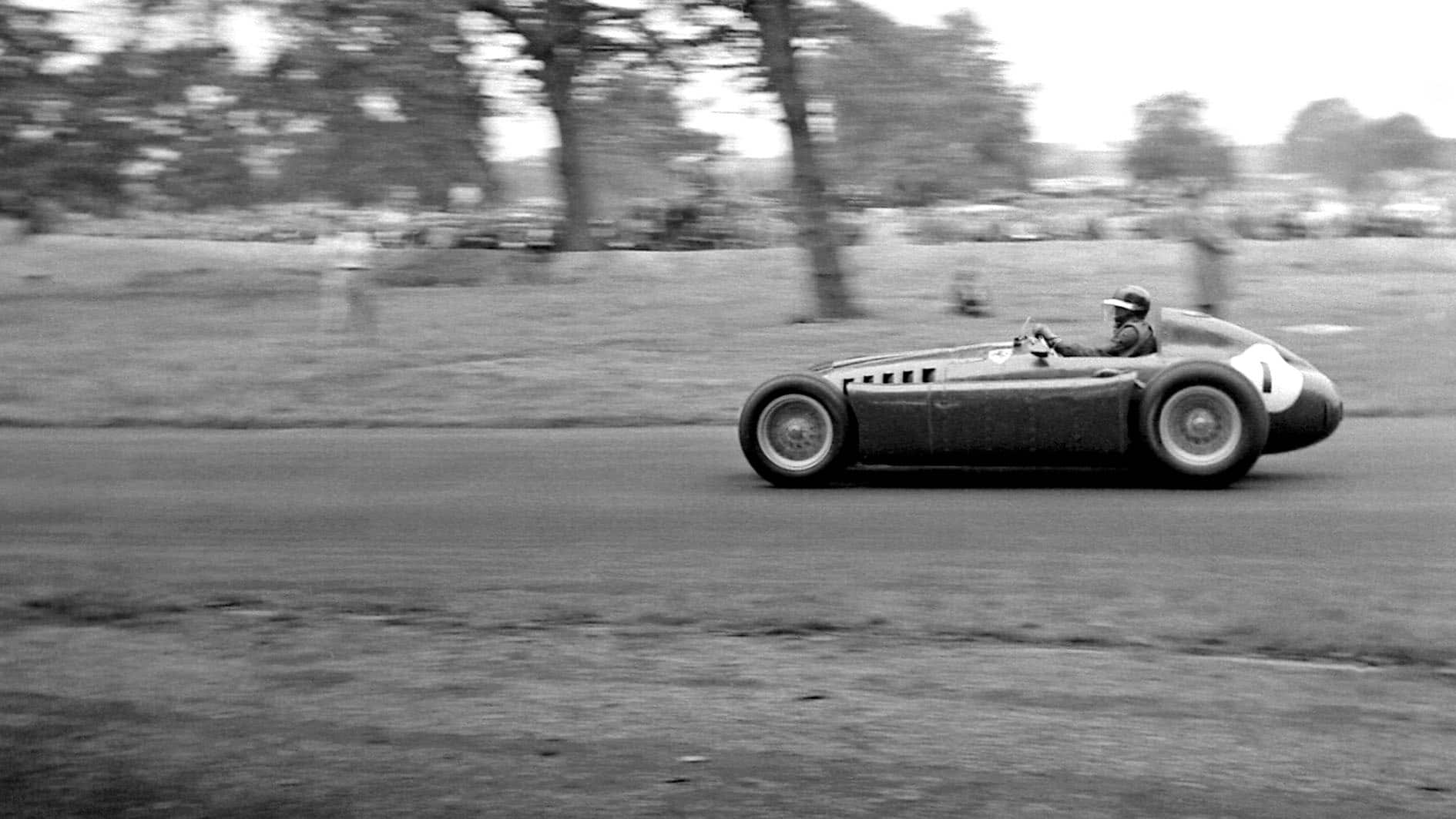
Hawthorn would come second at the 1955 Oulton Park in the D50
Getty Images
Bearing in mind that this was a non-championship race, the entry for the 1955 Gold Cup was sensational. Among the 19 starters were Luigi Musso, partnering Moss at Maserati, a new BRM for Peter Collins, two Vanwalls for Harry Schell and F1 new boy Desmond Titterington, Alfonso de Portago in his own Ferrari — and a pair of Lancia D50s, entered by Scuderia Ferrari for Mike Hawthorn and Eugenio Castellotti.
Following the death of team leader Alberto Ascari, Lancia’s Formula 1 programme had foundered. The company was already in some financial difficulties, and although Hawthorn, fed up at Vanwall, agreed to join the team in Ascari’s stead, the will to continue was essentially gone. Lancia allowed Castellotti to run at Spa, where he heroically beat the Mercedes to pole, but thereafter the team disappeared, and Eugenio and Mike transferred seamlessly to Ferrari.
